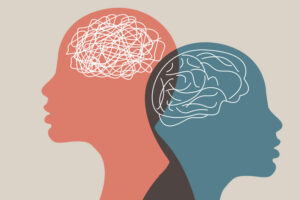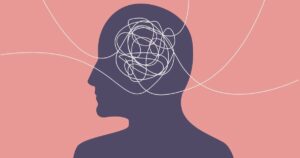Are you or someone you know struggling with both substance abuse and a mental health disorder? If so, you’re not alone. Dual diagnosis is a common issue that affects countless individuals around the world. Fortunately, there’s hope for those who are ready to seek help. Cognitive-behavioral therapy (CBT) has been proven to be effective in treating dual-diagnosis patients by targeting both their addiction and mental health symptoms simultaneously. In this blog post, we’ll explore what CBT is, how it works, and why it can be a game-changer for those dealing with dual diagnosis.
Contents
What is Dual Diagnosis?

Dual diagnosis is a term used to describe when a person has both a mental health disorder and a substance use disorder. While the two disorders can be independent of each other, they often occur together. Having both disorders can make treatment more complicated, but it is important to get help for both conditions.
The reasons why someone may develop both a mental health disorder and a substance use disorder are complex. Many people with dual diagnoses have experienced trauma, abuse, or neglect in the past. Other factors such as biological predisposition, environmental influences, and social stressors can also increase the likelihood of having both disorders at once.
There can be many challenges in treating someone with a dual diagnosis. Traditional treatment methods such as medications and therapy may not be enough to effectively treat the person’s condition. In these cases, Cognitive Behavioral Therapy (CBT) can be an effective way to help the person manage both disorders.
What is CBT?
CBT is a form of therapy that helps people to change their thinking and behavior patterns. It teaches people new skills and strategies for dealing with difficult situations and can help them to overcome problems such as anxiety, depression, and addiction. CBT is an effective treatment for dual diagnosis because it addresses both mental health and substance use disorders.
The working of this therapy is based on the idea that our thoughts, feelings, and behaviors are all interconnected. By identifying and changing certain thoughts or beliefs, people can learn to regulate their emotions and behavior better. In dual diagnosis treatment, CBT can be used to help individuals recognize triggers for their substance use as well as develop strategies for managing stress and combating cravings.
How Does CBT Help With Dual Diagnosis?

CBT, or cognitive behavioral therapy, is a type of therapy that helps people to change their negative thinking patterns and behaviors. Also, CBT is effective in treating the dual diagnosis, which is when someone has both a mental illness and a substance abuse problem.
CBT can help people with dual diagnosis to:
Identify their negative thinking patterns and beliefs: One of the main goals of CBT is to help people identify their negative thoughts and beliefs that may be contributing to their mental health and substance use problems.
Replacing negative thinking with more positive thoughts: CBT helps people replace their negative thoughts and beliefs with more positive ones, which can help them manage their mental health and substance use issues in healthier ways.
Learn new, more positive ways of thinking and behaving: Sometimes, people with a dual diagnosis can benefit from learning new skills and strategies for dealing with difficult situations. CBT can help them to learn healthier ways of thinking and behaving, which can reduce symptoms of their mental illness and substance use disorder.
Develop coping skills: Coping skills are important for people with dual diagnosis because they need to be able to manage their emotions, thoughts, and behaviors to stay healthy. CBT can help people develop coping skills that can be used to manage stressful situations and triggers that could lead to relapse.
Techniques of CBT For Dual Diagnosis

Some of the techniques used by therapists for CBT for dual diagnosis include:
Cognitive Restructuring
This technique helps people recognize and change their thinking patterns that lead to negative beliefs and behaviors. It involves teaching them cognitive strategies, such as challenging assumptions, recognizing distortions, and identifying alternative interpretations of a situation.
In this technique, the therapist helps a person identify and modify negative beliefs about themselves or their environment. This is done by providing supportive guidance to challenge those thoughts and replace them with more helpful ones.
Exposure Therapy
Exposure therapy is used to help people confront situations that cause fear or distress to learn how to cope better with them. This technique is often used to treat anxiety, phobias, and panic disorders. It can also be used for dual diagnosis to help people confront the underlying issues that lead to their substance misuse or mental illness.
The therapist will help the individual gradually expose themselves to triggers of their psychiatric symptoms or triggers of substance use without engaging in the behavior. This is done in a safe and controlled environment with the help of coping skills learned during therapy.
Behavioral Activation
Behavioral activation helps people increase their motivation and engagement in activities that will lead to positive outcomes. It involves helping the individual identify goals, plan steps for achieving them, and provide reinforcement when they make progress toward those goals.
This technique can be used to help individuals with dual diagnosis identify activities that will give them a sense of accomplishment and self-worth, as well as move away from the negative behaviors associated with their mental illness or substance use.
Motivational Interviewing
Motivational interviewing is a technique used to help people develop insight into their behaviors and motivations so they can commit to change. It involves exploring an individual’s feelings and beliefs about the behavior, identifying discrepancies between current and desired behavior, and helping them come up with solutions for overcoming any barriers that are preventing them from making changes.
This technique is often used in dual diagnosis treatment to help individuals see the need for change and to develop a commitment to making those changes. It can also help them stay motivated during treatment and learn how to recognize potential triggers of their symptoms or substance use.
Coping Skills Training
Another technique of CBT for dual diagnosis is coping skills training. This technique teaches people how to recognize and manage difficult situations without turning to substance misuse or psychiatric symptoms as a coping mechanism.
The therapist will work with the individual to identify potential triggers of their mental illness or substance use, then teach them strategies for moderating their emotions, reducing stress, and calming themselves. This can include relaxation techniques, problem-solving skills, and learning how to avoid or manage high-risk situations.
These are just a few of the techniques used in CBT for dual diagnosis. Through these approaches, people with dual diagnoses can learn how to manage their mental illness and substance use healthily.
Are There Any Risks Associated With CBT for Dual Diagnosis?

CBT for dual diagnosis is a promising treatment, but there are some risks associated with it. Some of these risks can be serious and should be discussed with your healthcare provider.
One of the risks of CBT for dual diagnosis is that it can lead to emotional distress or a worsening of symptoms in some cases. This means that while CBT can help treat mental health issues, it also may cause emotional distress or worsen existing symptoms.
Another risk can be that CBT can be challenging and require more effort from the patient than other treatments. This means that if a patient is not fully committed to the process, it can be difficult for them to get the most out of it.
Finally, some patients may find CBT overwhelming or too difficult, which could lead to frustration or even abandonment of treatment. Patients need to find an experienced and understanding therapist who can help them work through these challenges in a safe and supportive environment.
Overall, while there are some risks associated with CBT for dual diagnosis, it is still a promising treatment option that can be very helpful in treating mental health issues.
Conclusion
Cognitive behavioral therapy (CBT) is a valuable tool for those struggling with dual diagnosis. It has the potential to promote positive changes in behavior, thoughts, and emotions that can help people cope with their mental disorders. CBT can be tailored specifically to each individual’s needs and can provide them with the skills they need to manage their symptoms. With proper support from trained professionals and family members, CBT can be an effective way of treating dual diagnosis and improving the overall quality of life.
For more information, please contact MantraCare. Addiction is a chronic and often relapsing disorder characterized by compulsive drug-seeking and use despite harmful consequences. If you have any queries regarding Online Addiction Counseling experienced therapists at MantraCare can help: Book a trial Online therapy session


